Electrical Properties of Aluminum Nitride Thick Films Magnetron Sputtered on Aluminum Substrates
Abstract
:1. Introduction
2. Materials and Methods
2.1. Magnetron Sputtering System
Operative Conditions
2.2. Substrates
Surface Smoothing of Aluminum Pieces
2.3. Profilometer
2.4. X-ray Diffractometer
2.5. Test Systems: Parallel Plate Capacitor and Cantilever Beam with Aluminum Nitride Layer
2.5.1. Parallel Plate Capacitor
2.5.2. Cantilever Beam with Aluminum Nitride Layer
3. Results
3.1. Film Characterization
3.1.1. Measurements of Film Thickness by Profilometer
3.1.2. Measurements of Capacitance versus Frequency
3.1.3. XRD Measurements
3.1.4. Estimation of Transverse Piezoelectric Coefficient by Cantilever Beam Set-Up
4. Discussion
5. Conclusions
Author Contributions
Funding
Institutional Review Board Statement
Informed Consent Statement
Data Availability Statement
Conflicts of Interest
References
- Jiang, X.; Kim, K.; Zhang, S.; Johnson, J.; Salazar, G. High-Temperature Piezoelectric Sensing. Sensors 2014, 14, 144–169. [Google Scholar] [CrossRef] [PubMed] [Green Version]
- Hou, R.; Hutson, D.; Kirk, K.J.; Fu, Y.Q. AlN thin film transducers for high temperature non-destructive testing applications. J. Appl. Phys. 2012, 111, 074510. [Google Scholar] [CrossRef]
- Ceramic Materials (PZT)—Boston Piezo-Optics Inc. Available online: https://www.bostonpiezooptics.com/ceramic-materials-pzt (accessed on 10 February 2022).
- Iriarte, G.F.; Rodriguez, J.G.; Call, F. Synthesis of c-axis oriented AlN thin films on different substrates: A review. Mater. Res. Bull. 2010, 45, 1039–1045. [Google Scholar] [CrossRef]
- Iqbal, A.; Mohd-Yasin, F. Reactive Sputtering of Aluminum Nitride (002) Thin Films for Piezoelectric Applications: A Review. Sensors 2018, 18, 1797. [Google Scholar] [CrossRef] [PubMed] [Green Version]
- Clement, M.; Iborra, E.; Sangrador, J.; Sanz-Hervas, A.; Vergara, L.; Aguilar, M. Influence of sputtering mechanisms on the preferred orientation of aluminum nitride thin films. J. Appl. Phys. 2003, 94, 1495–1500. [Google Scholar] [CrossRef]
- Liu, H.Y.; Tang, G.S.; Zeng, F.; Pan, F. Influence of sputtering parameters on structures and residual stress of AlN films deposited by DC reactive magnetron sputtering at room temperature. J. Cryst. Growth 2013, 363, 80–85. [Google Scholar] [CrossRef]
- Kar, J.P.; Bose, G.; Tuli, S. Influence of nitrogen concentration on grain growth, structural and electrical properties of sputtered aluminum nitride films. Scr. Mater. 2006, 54, 1755–1759. [Google Scholar] [CrossRef]
- Chiu, K.-H.; Chen, J.-H.; Chen, H.-R.; Huang, R.-S. Deposition and characterization of reactive magnetron sputtered aluminum nitride thin films for film bulk acoustic wave resonator. Thin Solid Film. 2007, 515, 4819–4825. [Google Scholar] [CrossRef]
- Desideri, D.; Bernardo, E.; Corso, A.J.; Doria, A.; Maschio, A.; Moro, F.; Pelizzo, M.G. Transverse piezoelectric constant of aluminium nitride films deposited on aluminium substrate by reactive magnetron sputtering. Int. J. Appl. Electromagn. Mech. 2020, 64, 607–613. [Google Scholar] [CrossRef]
- Kim, T.; Kim, J.; Dalmau, R.; Schlesser, R.; Preble, E.; Jiang, X. High-temperature electromechanical characterization of AlN single crystals. IEEE Trans. Ultrason. Ferroelectr. Freq. Control 2015, 62, 1880–1886. [Google Scholar] [CrossRef] [PubMed]
- Song, X.; Fu, R.; He, H. Frequency effects on the dielectric properties of AlN film deposited by radio frequency reactive magnetron sputtering. Microelectron. Eng. 2009, 86, 2217–2221. [Google Scholar] [CrossRef]
- Gould, R.D.; Awan, S.A. Dielectric properties of AlNx thin films prepared by RF magnetron sputtering of Al using a N2/Ar sputtering gas mixture. Thin Solid Film. 2004, 469–470, 184–189. [Google Scholar] [CrossRef]
- Erturk, A.; Inman, D.J. A Distributed Parameter Electromechanical Model for Cantilevered Piezoelectric Energy Harvesters. J. Vib. Acoust. 2008, 130, 041002. [Google Scholar] [CrossRef]
- Erturk, A.; Inman, D.J. On Mechanical Modeling of Cantilevered Piezoelectric Vibration Energy Harvesters. J. Intell. Mater. Syst. Struct. 2008, 19, 1311–1325. [Google Scholar] [CrossRef]
- Material: Aluminum Nitride (AlN), Bulk—MEMS Clearinghouse. Available online: https://www.memsnet.org/material/aluminumnitridealnbulk/ (accessed on 10 February 2022).
- Narayanan, K.B.; Nair, D.R.; Dasgupta, A. Extraction of D31 piezoelectric coefficient of AlN thin film. In Proceedings of the IEEE International Conference on Micro Electro Mechanical Systems (MEMS), Virtual, Gainesville, FL, USA, 25–29 January 2021. [Google Scholar] [CrossRef]
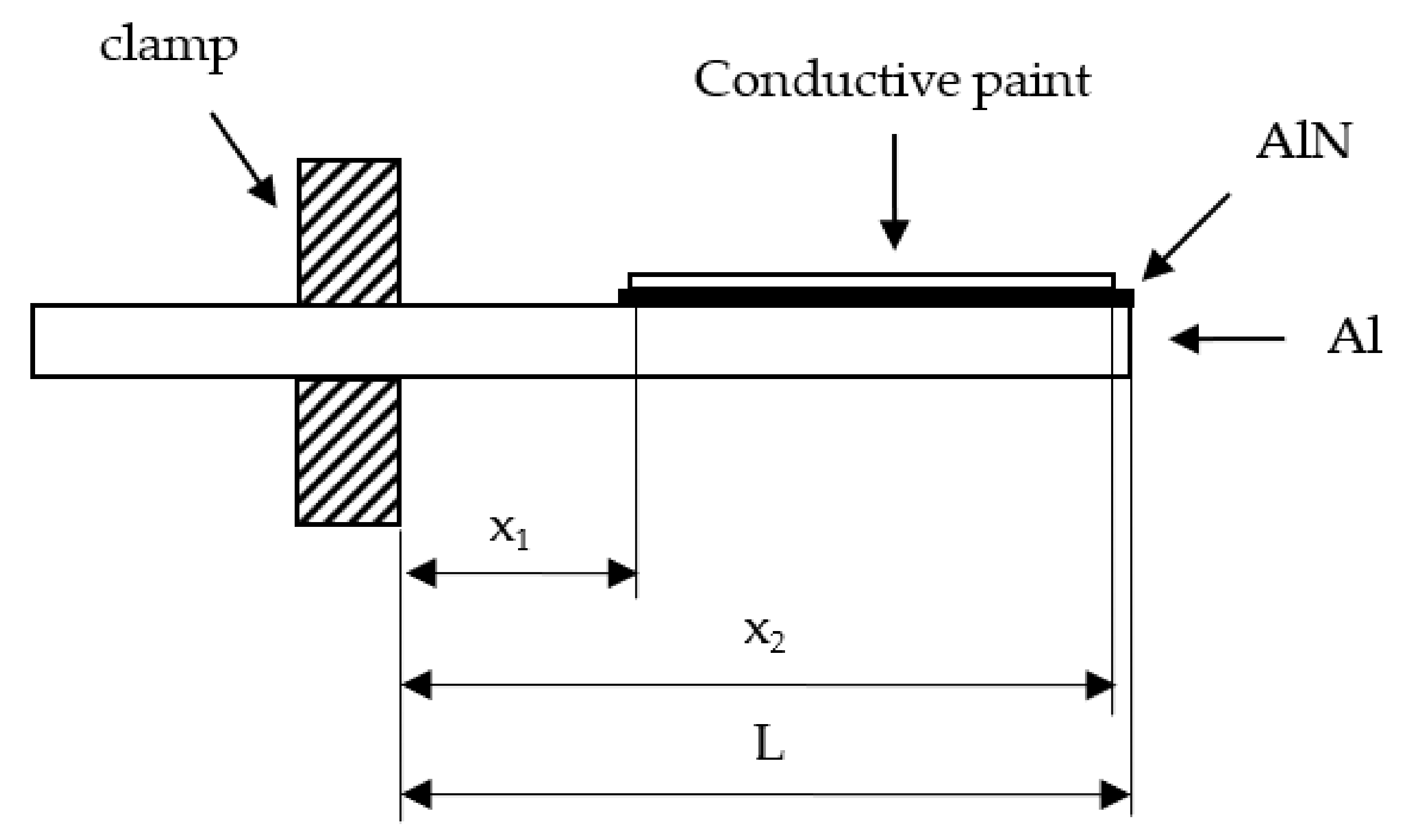
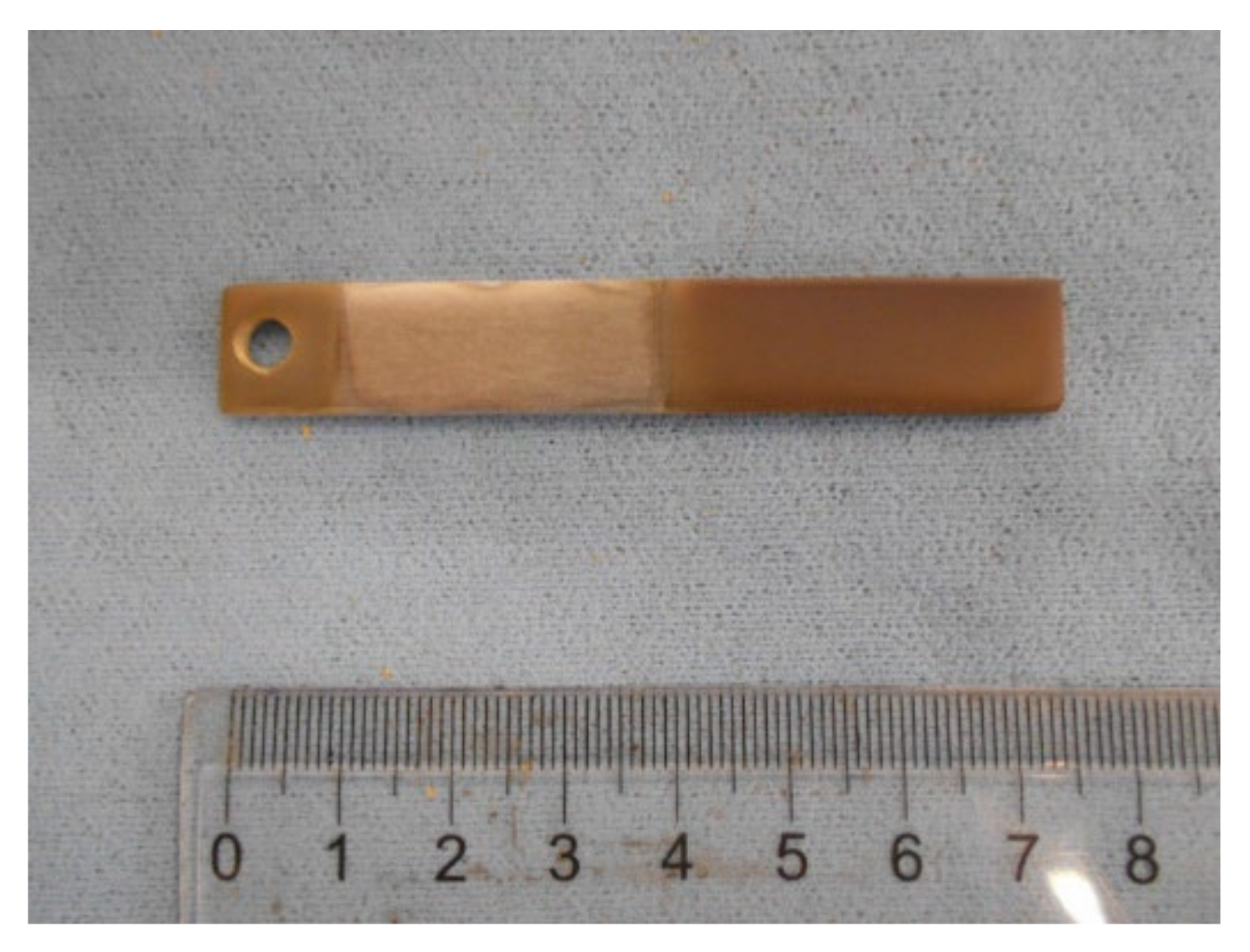
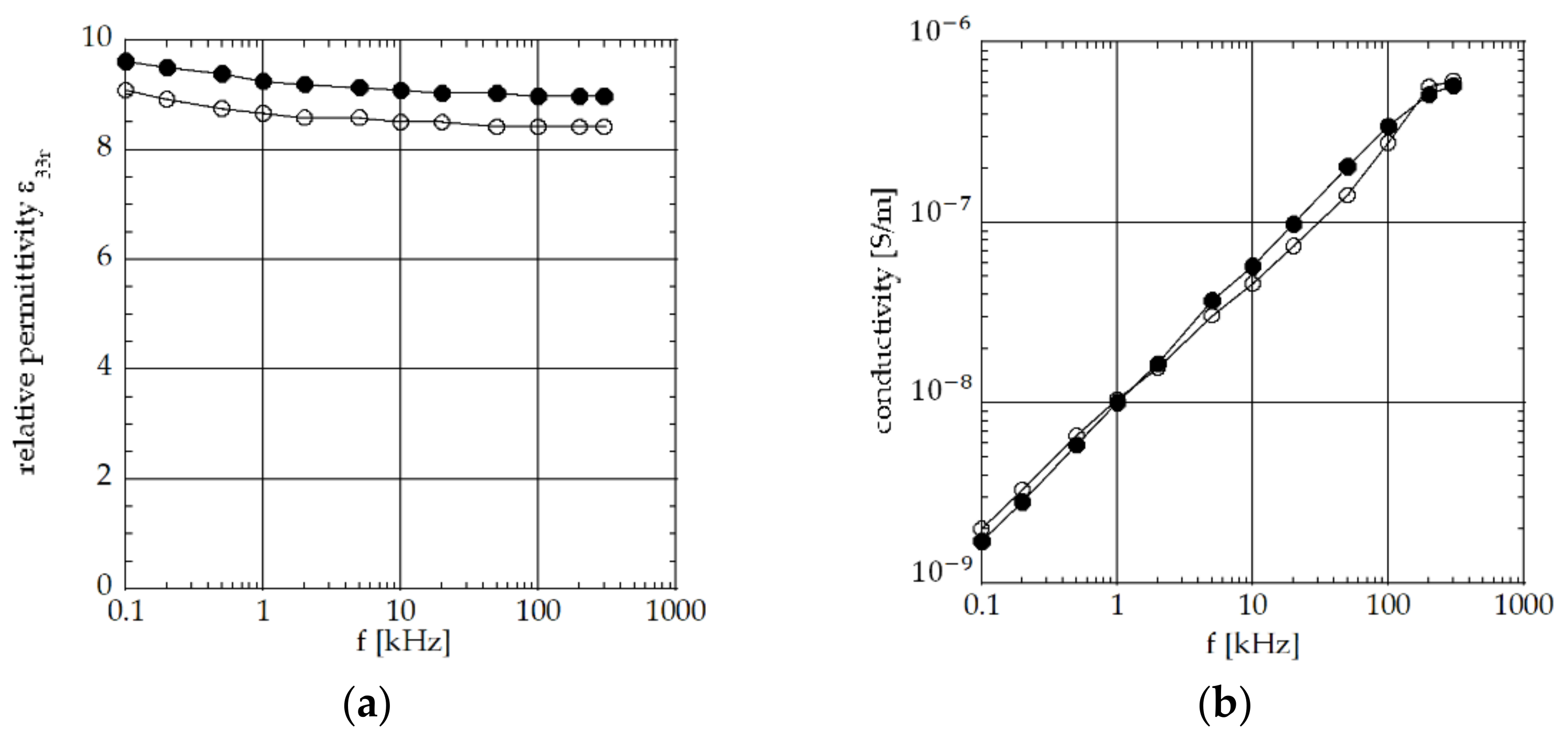
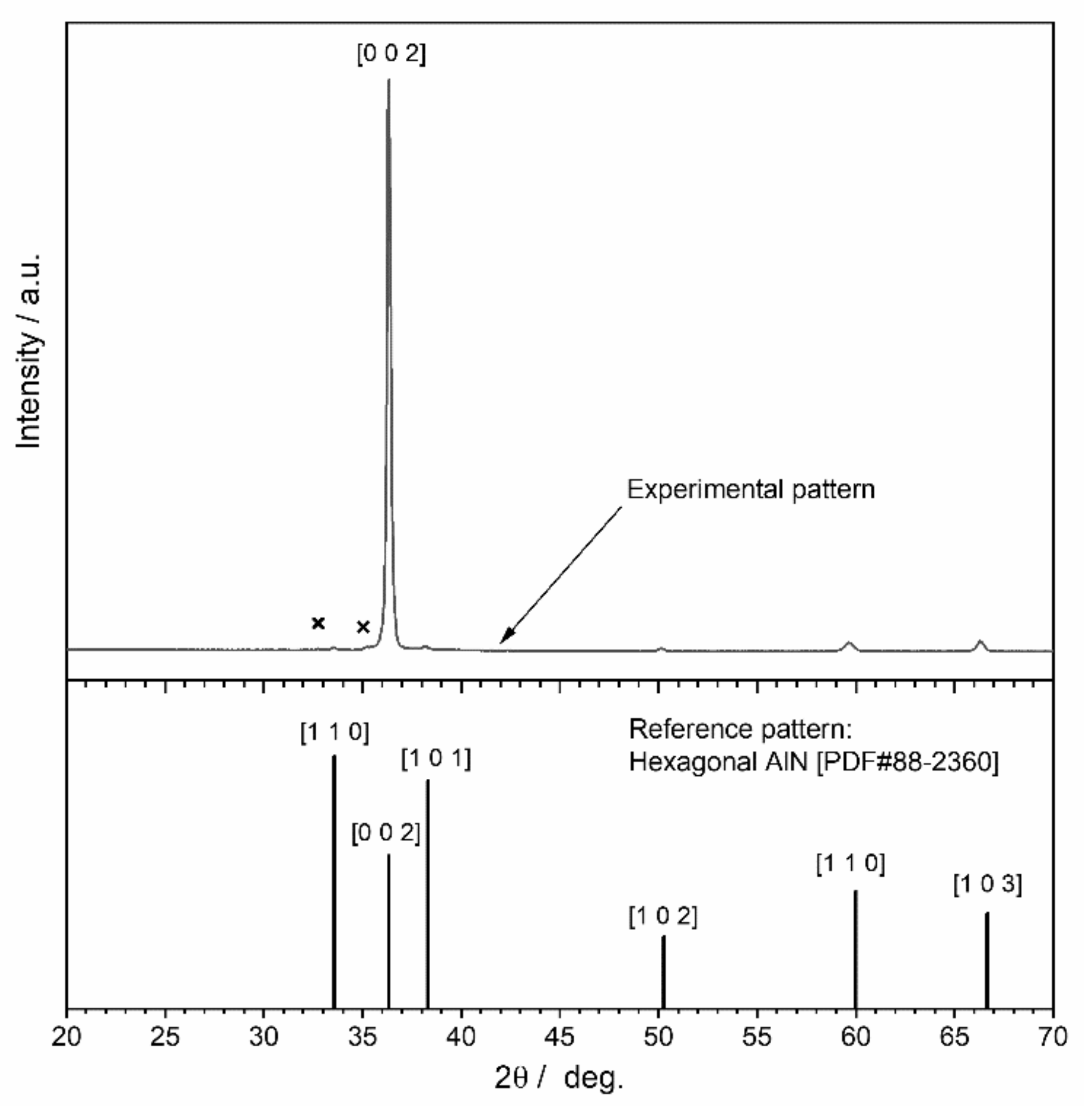
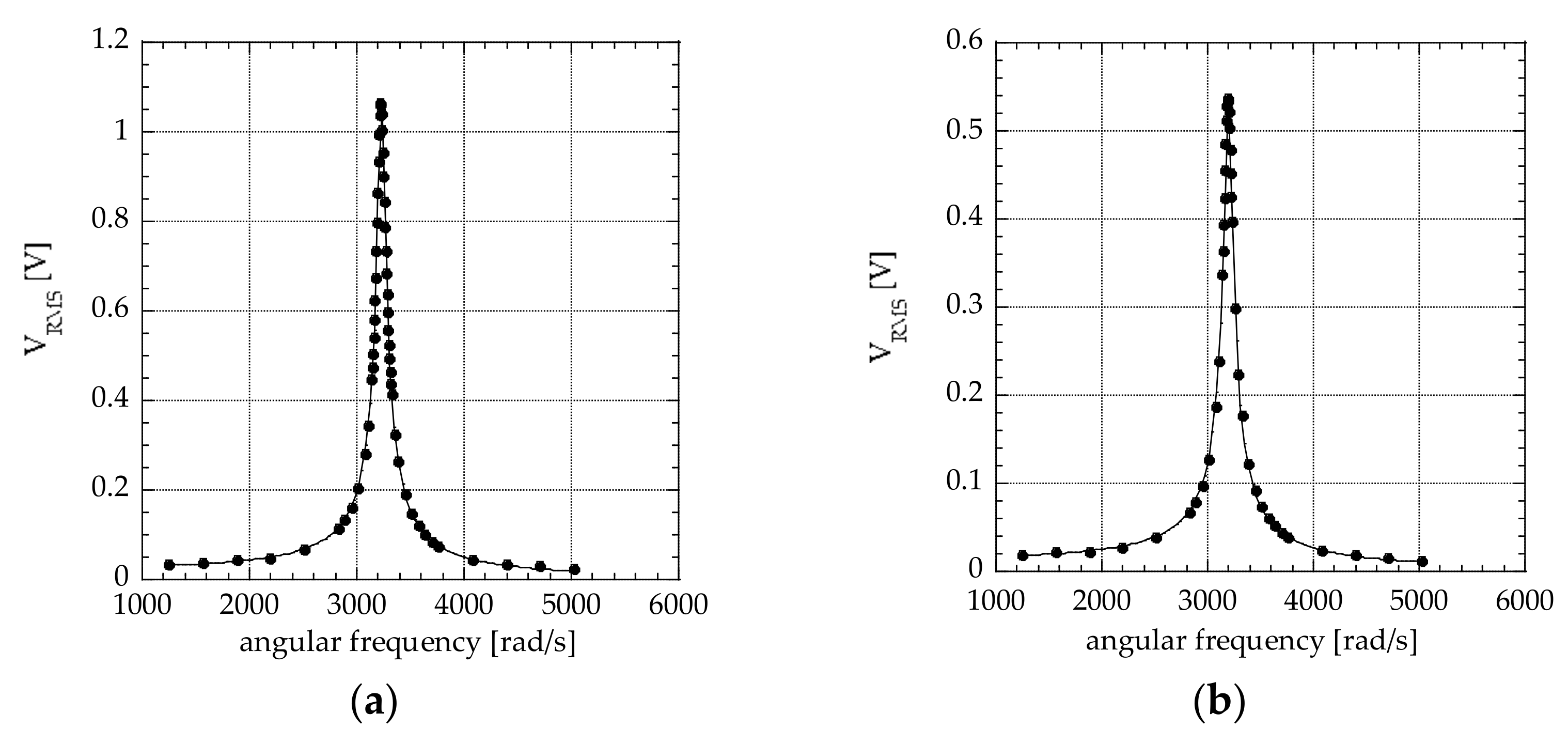
| N2 Concentration | Film Thickness on Substrate # 1 (µm) | Film Thickness on Substrate # 3 (µm) |
|---|---|---|
| 0.4 | 28.7 ± 0.6 | n.a. |
| 0.8 | 20.3 ± 0.5 | 19.1 ± 0.5 |
| N2 Concentration | Magnitude of d31 (× 10−12 C/N) |
|---|---|
| 0.4 | 0.52 |
| 0.8 | 0.42 |
Publisher’s Note: MDPI stays neutral with regard to jurisdictional claims in published maps and institutional affiliations. |
© 2022 by the authors. Licensee MDPI, Basel, Switzerland. This article is an open access article distributed under the terms and conditions of the Creative Commons Attribution (CC BY) license (https://creativecommons.org/licenses/by/4.0/).
Share and Cite
Desideri, D.; Bernardo, E.; Corso, A.J.; Moro, F.; Pelizzo, M.G. Electrical Properties of Aluminum Nitride Thick Films Magnetron Sputtered on Aluminum Substrates. Materials 2022, 15, 2090. https://doi.org/10.3390/ma15062090
Desideri D, Bernardo E, Corso AJ, Moro F, Pelizzo MG. Electrical Properties of Aluminum Nitride Thick Films Magnetron Sputtered on Aluminum Substrates. Materials. 2022; 15(6):2090. https://doi.org/10.3390/ma15062090
Chicago/Turabian StyleDesideri, Daniele, Enrico Bernardo, Alain Jody Corso, Federico Moro, and Maria Guglielmina Pelizzo. 2022. "Electrical Properties of Aluminum Nitride Thick Films Magnetron Sputtered on Aluminum Substrates" Materials 15, no. 6: 2090. https://doi.org/10.3390/ma15062090
APA StyleDesideri, D., Bernardo, E., Corso, A. J., Moro, F., & Pelizzo, M. G. (2022). Electrical Properties of Aluminum Nitride Thick Films Magnetron Sputtered on Aluminum Substrates. Materials, 15(6), 2090. https://doi.org/10.3390/ma15062090









